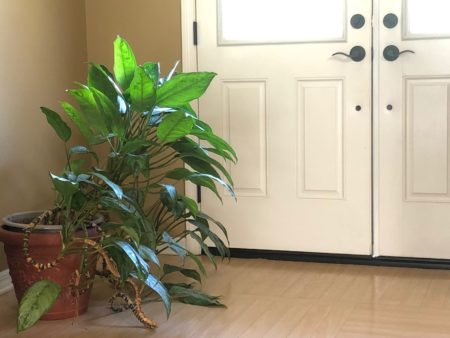Finding the right balance of light to ensure your plants are healthy and thriving can sometimes be tricky. Your plant has ways of telling you, though, by developing marked changes in its appearance. Before it gets too drastic, though, McNamara Florist, Indianapolis’ best local florist, wants you to look for the below signs which identifies either too much to too little light is making its way to your plant.
Clues Your Plants Needs More Light
Leggy
Tall, thin stems that stretch out in their quest for light is a sign of insufficient light. Usually leggy stems also have wide spaces between adjacent leaves. This space is known as an internode and large internodes signal poor lighting conditions.

Smaller Leaves
In an effort to conserve energy, a plant not receiving enough light will produce fewer and smaller leaves. To find out for sure, compare new growth to old growth to see if there is a marked difference in leaf size.
Leaning
A lopsided or leaning plant is one that has turned is leaves and stems in an effort to absorb as much light as possible from its light source. To prevent this, make sure your plant is getting plenty of light and give it a quarter turn at least once a week so all the leaves around the plant get ample amounts of light.

Abnormal Leaf Color
If your plant has pale, yellowing leaves or leaves dropping off, then it needs more light. When a plant doesn’t get enough light, then the chlorophyll that makes the photosynthesis process happen cannot do its job, resulting in pale, dull leaves. Also, with variegated plant leaves, if they’ve lost their coloring and revert to a dull green, then it’s another sign of insufficient sunlight.
Slowed Growth
A plant will reduce or stop growing in effort to conserve energy if there is not enough light to give it more energy. During the winter months, it’s natural for plant growth to slow down, but if you’re not seeing any noticeable growth during the spring and summer, then your plant is not receiving enough energy/food to thrive and flourish like it should.
Getting the Light Right

Depending on the species of plant, it’s size, and the amount of sunlight coming into your home, it may take some trial and error to get the lighting right for each of your plants. However, being aware of the above signs of light deficiencies should help. Remember too, there is such a thing as too much light for plants, though, so only put sun-loving plants like palms, succulents, and cacti in full direct light for most of the day.
Other options include moving the plants around to different widows, elevating them, or getting a grow light to keep your plant babies happy and healthy.


